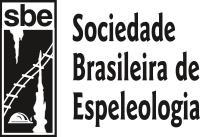A desertificação rochosa cárstica é um grande problema ecológico e geológico no sudoeste da China, que tem restringido o desenvolvimento sustentável da sociedade e da economia. Muitos métodos têm sido usados para avaliar a desertificação rochosa com base em sensoriamento remoto por satélite, mas os resultados desses métodos são afetados pelo entorno heterogêneo da região de quilates e a baixa resolução dos sensores. Neste estudo, um novo método que combina imagens de satélite e imagens de veículos aéreos não tripulados (VANT) foi usado para extrair quantitativamente informações e avaliar a desertificação rochosa. Em primeiro lugar, extraímos a proporção de rocha nua das imagens locais de UAV de alta resolução, e então os modelos de regressão foram estabelecidos entre a proporção de rochas nuas das imagens de UAV e a refletividade da banda e oito índices de rochas de imagens de satélite para inverter a proporção de rochas nuas na escala do condado. Os resultados mostraram que a precisão geral eF1 da classificação das imagens de UAV foi de 97% e 90%, respectivamente. O modelo de regressão linear entre a refletividade dos pixels na banda 2 da imagem Landsat e a proporção de rocha nua extraída das imagens de UAV foi o melhor (R 2 = 0,86). Além disso, nosso método no qual a desertificação rochosa foi avaliada pelo modelo de inversão baseado em imagens de UAV e imagens Landsat foi superior à abordagem tradicional baseada na cobertura vegetal. Esses resultados sugerem que podemos extrair informações sobre a desertificação rochosa com base em imagens de UAV de alta resolução e avaliar a desertificação rochosa pelo modelo de inversão da escala local para a regional.
Karst rocky desertification is a major ecological and geological problem in Southwest China that has restricted the sustainable development of society and the economy. Many methods have been used to evaluate rocky desertification based on satellite remote sensing, but the results of these methods are affected by the heterogeneous surroundings of the karat region and the low resolution of sensors. In this study, a new method that combines satellite images and unmanned aerial vehicle (UAV) images was used to quantitatively extract information and evaluate rocky desertification. Firstly, we extracted the bare rock ratio from the local high-resolution UAV images, and then the regression models were established between the bare rock ratio of UAV images and the band reflectivity and eight rock indices of satellite images to invert the bare rock ratio at the county scale. The results showed that the overall accuracy and F1 of the classification of UAV images was 97% and 90%, respectively. The linear regression model between the reflectivity of the pixels in band 2 of the Landsat image and the bare rock ratio extracted from the UAV images was the best (R2 = 0.86). In addition, our method in which rocky desertification was assessed by the inversion model based on UAV images and Landsat images was superior to the traditional approach based on vegetation coverage. These results suggested that we can extract information on rocky desertification based on high-resolution UAV images and assess rocky desertification by the inversion model from the local to regional scale.
